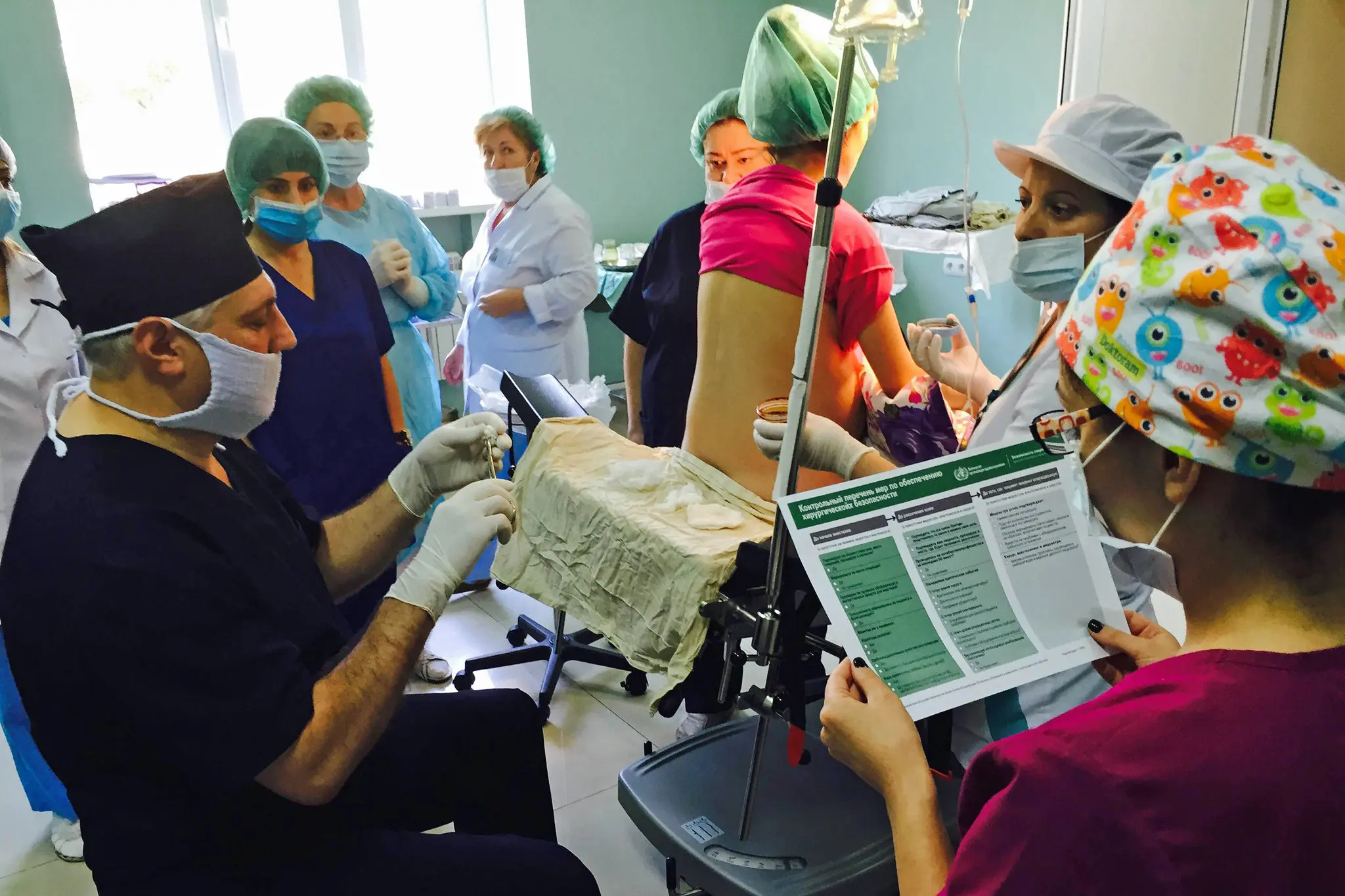Hospitals That Skip Surgical Safety Checklists Risk Patient Lives, Study Finds
Despite evidence showing that surgical safety checklists save lives, a troubling number of hospitals and surgeons still fail to use them consistently. Experts warn that this resistance may be putting patients at unnecessary risk and undermining modern standards of care.
More than a decade after the World Health Organization (WHO) introduced its surgical safety checklist—a simple tool shown to reduce complications and deaths during operations—a surprising number of hospitals and surgeons around the world still do not use it consistently. According to new data and interviews with surgical teams, some hospitals continue to resist what experts say is one of the most effective, low-cost interventions in modern medicine. Surgical safety checklists are brief, structured protocols completed by operating room staff before, during, and after a procedure.
They include steps like confirming the patient’s identity, reviewing the surgical plan, ensuring equipment sterility, and anticipating possible complications. Studies have shown that implementing these checklists can reduce post-surgical mortality by as much as 40% and lower complication rates across a range of procedures. Yet in many facilities—particularly in wealthier countries where technology and staffing levels are not barriers—checklists are ignored, half-completed, or skipped entirely.
### A Proven Lifesaver That’s Still Ignored
The surgical checklist was first piloted by WHO in 2008 after years of research into preventable surgical errors. Countries as diverse as Tanzania, the UK, India, and the U. S.
participated in early implementation studies, and the results were striking. In hospitals that adopted the checklist, surgical-site infections, anesthesia complications, and even deaths dropped significantly. The checklist is now recommended by numerous professional organizations, including the American College of Surgeons and the Joint Commission.
It takes less than three minutes to complete and is endorsed by countless health ministries globally. And yet, recent audits and surveys show a wide range of compliance. In some countries, fewer than 30% of surgical teams routinely use the checklist.
Even in developed health systems with mandated policies, actual implementation is often superficial. ### Culture Over Evidence
Why would any medical team ignore a simple tool proven to save lives? Experts point to deeply ingrained cultural attitudes in the operating room. Some surgeons view the checklist as a bureaucratic nuisance or a challenge to their authority.
“Surgery has long had a hierarchical culture,” said Dr. Atul Gawande, a surgeon and one of the architects of the WHO checklist. “You have a captain of the ship, and the idea that you pause and go over a checklist together feels to some like second-guessing the leader.
”
In many institutions, attending surgeons dictate whether or not the checklist is taken seriously. Some teams rush through it perfunctorily, skipping steps or reciting them without verification. Others delegate it entirely to nurses, reducing it to a formality rather than a collaborative safety step.
### Real-World Consequences
The failure to use checklists properly isn’t just theoretical—it has real consequences. In one U. K.
hospital trust, an internal review found that skipping the checklist was linked to a rise in post-op infections. A U. S.
study of malpractice claims found that many involved communication failures that could have been addressed with checklist procedures. In some high-profile cases, patients have suffered catastrophic injuries because of errors that the checklist is specifically designed to prevent: the wrong site being operated on, the wrong procedure being performed, or foreign objects left inside the body. “In most of those cases, someone on the team suspected something was off—but they didn’t speak up,” said Dr.
Danielle Freeman, an anesthesiologist and patient safety expert. “The checklist is designed to create a moment where speaking up is expected. ”
### Resistance in the Global South vs.
Global North
Ironically, many lower-income countries have embraced the checklist with greater enthusiasm than some wealthier ones. In hospitals where resources are stretched thin, checklists provide a critical layer of communication and planning. “We’ve seen incredible gains in countries like Ethiopia and Nepal,” said Dr.
Alex Haynes of Harvard’s Ariadne Labs, which helped develop the original tool. “Where hospitals commit to the checklist and adapt it to their context, the results are transformative. ”
In contrast, some hospitals in Europe and North America that have access to advanced technology and electronic health records have shown poorer adherence.
In these settings, the checklist is sometimes seen as redundant or outdated. ### Training and Buy-In Are Key
Experts emphasize that simply mandating checklists is not enough. Successful implementation requires leadership support, team training, and a cultural shift toward collaborative safety.
“When checklists fail, it’s usually because people are going through the motions,” said Dr. Jennifer Martinez, a surgical quality officer at a major academic hospital. “You need real buy-in.
The checklist isn’t about ticking boxes—it’s about slowing down, checking assumptions, and creating space for everyone’s voice. ”
Hospitals that have invested in regular training, simulations, and feedback loops tend to see higher compliance and better outcomes. Some use electronic checklists integrated into digital surgical workflows, with required sign-offs at each phase.
### The Cost of Complacency
While checklist fatigue is real—especially during long shifts or in fast-paced trauma environments—experts argue that complacency poses a far greater threat. “Every patient deserves the same level of safety, regardless of how routine the operation may seem,” said Dr. Laura Green, a surgical nurse educator.
“The checklist is not a sign that you don’t trust your team—it’s a sign that you take your team’s safety and your patient’s life seriously. ”
In fact, studies suggest that resistance to checklists may be more common in hospitals with higher complication rates, creating a feedback loop of avoidable errors. ### Renewed Calls for Accountability
As surgical volumes return to pre-pandemic levels, many health systems are revisiting quality protocols.
Some are considering tying checklist adherence to performance evaluations, accreditation standards, or even reimbursement. Patient advocates, too, are becoming more vocal. Several organizations now encourage patients to ask their surgeons directly whether the hospital uses safety checklists and how strictly they’re followed.
“We have the science,” said Dr. Gawande. “What we lack is the will to make safety a daily habit, not an optional extra.
”
### Conclusion: A Simple Tool, A Lifesaving Choice
The surgical safety checklist is one of the clearest examples in modern medicine of how low-tech solutions can save lives. Yet in too many operating rooms, it remains underused or underappreciated. Experts say that changing this will require not just better policies but a cultural shift—one that values humility, teamwork, and a commitment to continuous improvement.
Because when it comes to patient safety, skipping the checklist isn’t just a missed opportunity—it’s a silent risk, hiding in plain sight.




